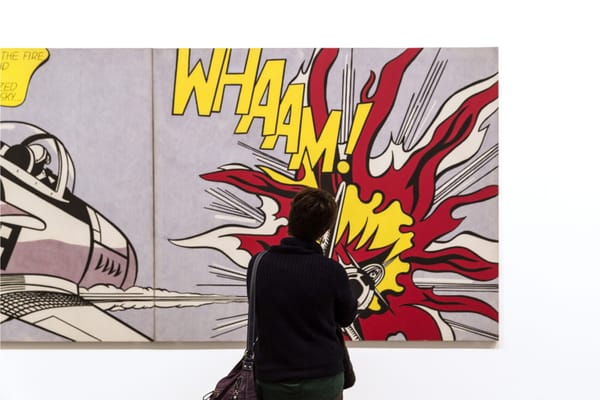How Arts and Culture Serve as a Force for Social Change
Discover how creative expression, social enterprises, and technology combine to empower marginalized voices and foster systemic change.

The connection between arts, culture, and social change has historically been a powerful one, but its capacity for systemic transformation is being increasingly recognized in modern times. As the world grapples with social, economic, and environmental challenges, the arts are proving to be more than just a reflection of society—they are emerging as agents of change. From addressing inequality to fostering community engagement and policy advocacy, artists and cultural leaders are at the forefront of driving social progress. Below, we explore how creative expression is actively transforming societies, fueled by the growing intersection between art and social enterprise.
Redefining Storytelling: Art as a Tool for Empowerment
Art's ability to tell powerful stories and give voice to the voiceless has been a critical factor in its role as a force for change. More than an aesthetic endeavor, art serves as a medium for shifting narratives, challenging long-standing assumptions, and addressing social injustices. The impact of art on marginalized communities—those whose stories have historically been ignored or misrepresented—has been profound.
Take Wanuri Kahiu, the Kenyan filmmaker whose groundbreaking film Rafiki was banned in Kenya for its portrayal of a joyful love story between two women. Kahiu’s fight for freedom of expression became a landmark legal battle, elevating her to an international platform as a voice for LGBTQ+ rights in regions where such narratives are still heavily censored. Her journey demonstrates the power of storytelling in creating not only empathy but also legislative change. Through her advocacy, Kahiu has shown that art has the capacity to challenge oppressive laws and open new dialogues, even in the face of political resistance.
This is where art and social enterprise can meet. Organizations like the Schwab Foundation, through their social innovation networks, support artists like Kahiu who use creativity to break barriers and advocate for policy reforms. Art-driven social enterprises can scale these stories globally, transforming individual acts of resistance into structured programs aimed at social reform.
Art as a Force in Social Enterprises
Art doesn't just inspire change—it can drive structured, measurable impacts when incorporated into the framework of social enterprises. These mission-driven businesses use artistic creativity to achieve social goals, from advocacy to community building. Social enterprises that focus on arts-based therapy offer creative outlets to marginalized or traumatized groups, such as refugees or victims of violence. Programs like Free Arts NYC, which partners professional artists with underserved youth, create mentorship opportunities that foster emotional growth, confidence, and even educational achievement.
By integrating art into social enterprises, the creative process is expanded beyond the individual artist and into systemic frameworks that can reach wider communities. In urban planning, for example, Artscape has pioneered a model where art-led urban development transforms underdeveloped neighborhoods into thriving cultural hubs. In these spaces, art serves as the anchor for community cohesion, bringing together local enterprises, residents, and artists to revitalize economically struggling areas.
These initiatives highlight that art and social enterprise have the potential to reshape communities, providing not only cultural enrichment but also economic and social empowerment. By placing art at the center of social entrepreneurship, organizations can scale creative projects into impactful movements, addressing everything from local poverty to global climate issues.
Data-Driven Insights: Art and Technology for Social Change
The infusion of technology into the creative process has expanded the reach and impact of art on social causes. In recent years, technological tools have become vital in enhancing both artistic reach and the measurement of impact. Social enterprises and art-based organizations increasingly rely on data analytics to track the success of initiatives, optimize their strategies, and understand how art influences society at large.
For instance, initiatives like For Freedoms, a civic platform for creative engagement, use social media analytics to gauge the effectiveness of their campaigns. By analyzing how certain narratives resonate with different demographics, they can optimize their content and further refine their mission of expanding democratic participation through art. In this way, technology offers a way for art-based social enterprises to quantify their cultural impact.
Digital tools have also enhanced cross-cultural collaboration, allowing artists from various parts of the world to co-create in virtual spaces, exchanging resources and ideas that wouldn’t have been possible without digital platforms. Online exhibitions, virtual art spaces, and interactive installations have brought art to global audiences, democratizing access and amplifying social causes.
Moreover, art restoration—a specialized field at the intersection of technology and culture—provides insight into how technological advances can preserve historical integrity while making art accessible for future generations. Tools like AI-enhanced imaging and digital restoration have revolutionized conservation practices, ensuring that cultural treasures remain visible and relevant in an evolving world.
A Broader Global Reach: Art as a Catalyst for Economic and Social Revitalization
The global impact of socially engaged art cannot be overstated. From driving tourism to promoting social justice, art’s role in fostering economic growth and cultural diplomacy is becoming increasingly clear. In cities like Berlin and New Orleans, public art projects and creative festivals are not only revitalizing neglected areas but also creating jobs, supporting local businesses, and attracting tourists.
Take Berlin, where the city’s public art installations and vibrant creative scene have contributed to its reputation as one of the world’s leading cultural capitals. Art is now seen as a key component in Berlin's economic strategy, providing a cultural draw that fuels the city's tourism industry and generates income for local businesses. Public art serves as a visual representation of the city's commitment to inclusivity, diversity, and creative expression.
In New Orleans, similar efforts are underway, with initiatives like Prospect New Orleans, an international art biennial that brings together artists from across the globe. The event has helped put New Orleans on the map as a cultural destination while also addressing social issues like housing inequality and environmental sustainability.
These examples show that art is not just about self-expression; it’s a vital economic driver and a tool for community regeneration. Through creative initiatives, cities are using art to rebuild communities, foster tourism, and create sustainable economic opportunities for residents.
Art as a Driving Force for Systemic Social Change
As we look toward the future, the role of arts and culture in driving social change is becoming more structured, scalable, and measurable. Through social enterprises, creative placemaking, and technological innovation, artists and cultural leaders are not just inspiring change but building frameworks that integrate art into broader social, economic, and environmental movements.
Art offers a unique space where difficult conversations can occur, where marginalized voices can be heard, and where new narratives can be built. Whether it’s through storytelling, community revitalization, or advocacy, the cultural sector is proving to be indispensable in the ongoing fight for a more inclusive, equitable, and just society.
The question remains: As the influence of art on social change continues to grow, how can we ensure that the collaboration between artists, social enterprises, and technology continues to evolve in ways that drive systemic, sustainable change for all?
ART Walkway News





